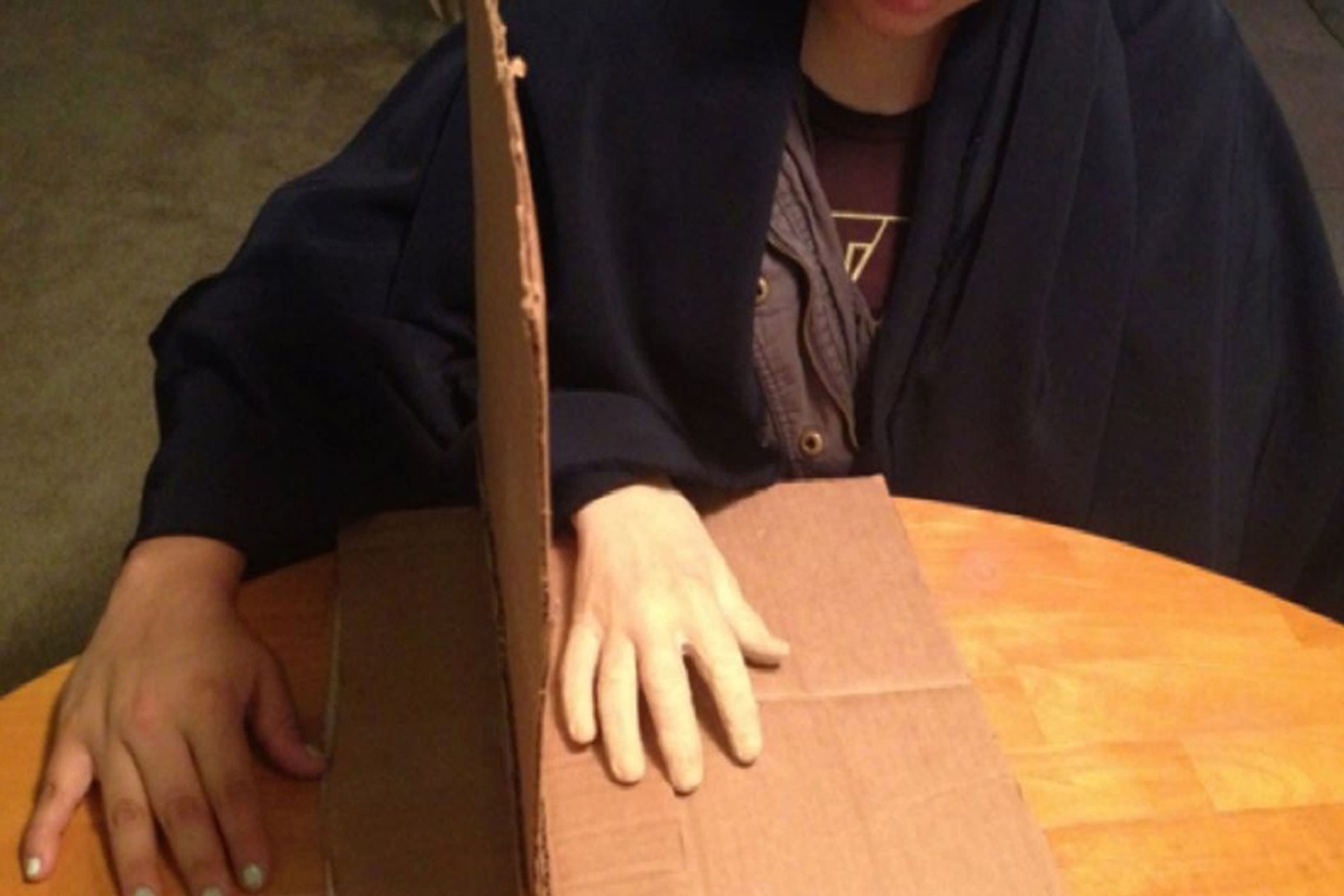
HOW THE RUBBER HAND ILLUSION COULD HELP PEOPLE OVERCOME OCD
The rubber hand illusion could help people with obsessive compulsive disorder (OCD) overcome the condition, a new study suggests. Researchers tested whether it was possible to help patients by contaminating a false hand with fake faeces - a procedure they call multisensory stimulation therapy.
In the rubber hand illusion someone places both hands in front of them on a table, either side of a partition so they cannot see their right hand.
The illusionist - in this case, the scientist - strokes both the fake hand and hidden right hand using a paintbrush.
After several minutes the individual often reports a sensation of touch from the fake hand as though it was their own.
Lead author Dr Baland Jalal teamed up with neuroscientist VS Ramachandran and researchers at Harvard University.
Twenty-nine patients from the McLean Hospital Obsessive Compulsive Disorder Institute were recruited for the study published in Frontiers In Human Neuroscience.
Sixteen had their hidden and dummy hands stroked at the same time, while 13 patients (the control group) had their hands stroked out of sync.
After five minutes they rated how much the rubber hand felt like their own.
Fake faeces was then smeared on the rubber hand with a tissue, while a damp paper towel was simultaneously dabbed on the participant's real hand.
They rated their disgust, anxiety and hand-washing urge levels, and the researcher rated their facial expression of disgust.
Patients in both groups reported an equally strong rubber hand illusion, and similar levels of contamination.
Next, the clean paper towel and the tissue were removed, leaving fake faeces on the rubber hand.
The hands were stroked for five minutes, and then participants provided contamination ratings and the experimenter rated their facial expression.
This time 65% of those in the experimental condition had a disgusted facial expression, compared with 35% in the control.
Next the researcher stopped stroking and placed the fake faeces on the patient's real right hand and asked them to provide contamination ratings.
While those in the control group had average disgust, anxiety and hand-washing urge levels at nearly seven, the experimental group had levels of nearly nine - an overall 23% difference in contamination ratings.
OCD affects up to one in 50 people across the world, with the most common type characterised by severe contamination fears.
The condition can be treated by using a combination of medication and a form of cognitive behavioural therapy known as exposure and response therapy.
It can include patients being told to touch a contaminated surface such as a toilet, but not wash their hands.
The new technique could remove the need for the often unbearable exposure therapy, scientists say.
Dr Jalal, a neuroscientist based in the department of psychiatry at the University of Cambridge, said: "Over time, stroking the real and fake hands in synchrony appears to create a stronger and stronger and stronger illusion to the extent that it eventually felt very much like their own hand.
"This meant that, after 10 minutes, the reaction to contamination was more extreme."
The next step is to conduct randomised clinical trials and compare this technique to existing treatments.
Published: by Radio NewsHub